Festivals & Seasonal Activities

Honolulu Waldorf School brings a universal nature to our celebration of festivals through their connection to the rhythms of the earth and the cosmos. We feel that the ceremonies and rituals associated with the festivals celebrated in Waldorf schools around the world help to reveal a deeper significance in many everyday occurrences. The living rhythms of the year, taken up in each class in different ways, help provide a common foundation for the children.
The nature of the festival is universal. In the lower grades the teachers do not seek to explain all this to the children, but allow them to take these things quietly into their hearts. Children prepare for the festivals by decorating the room, baking special treats, learning songs, etc. Nature stories and special tales help bring deeper significance of the season in a pictorial way. The high school students explore the meaning of the festivals in many different ways such as dramatic participation in plays and pageants, forums and discussion, community service and guiding activities for the younger children.
Director of Admissions
Tel: (808) 377-5491
Email: admissions@honoluluwaldorf.org
Life at HWS
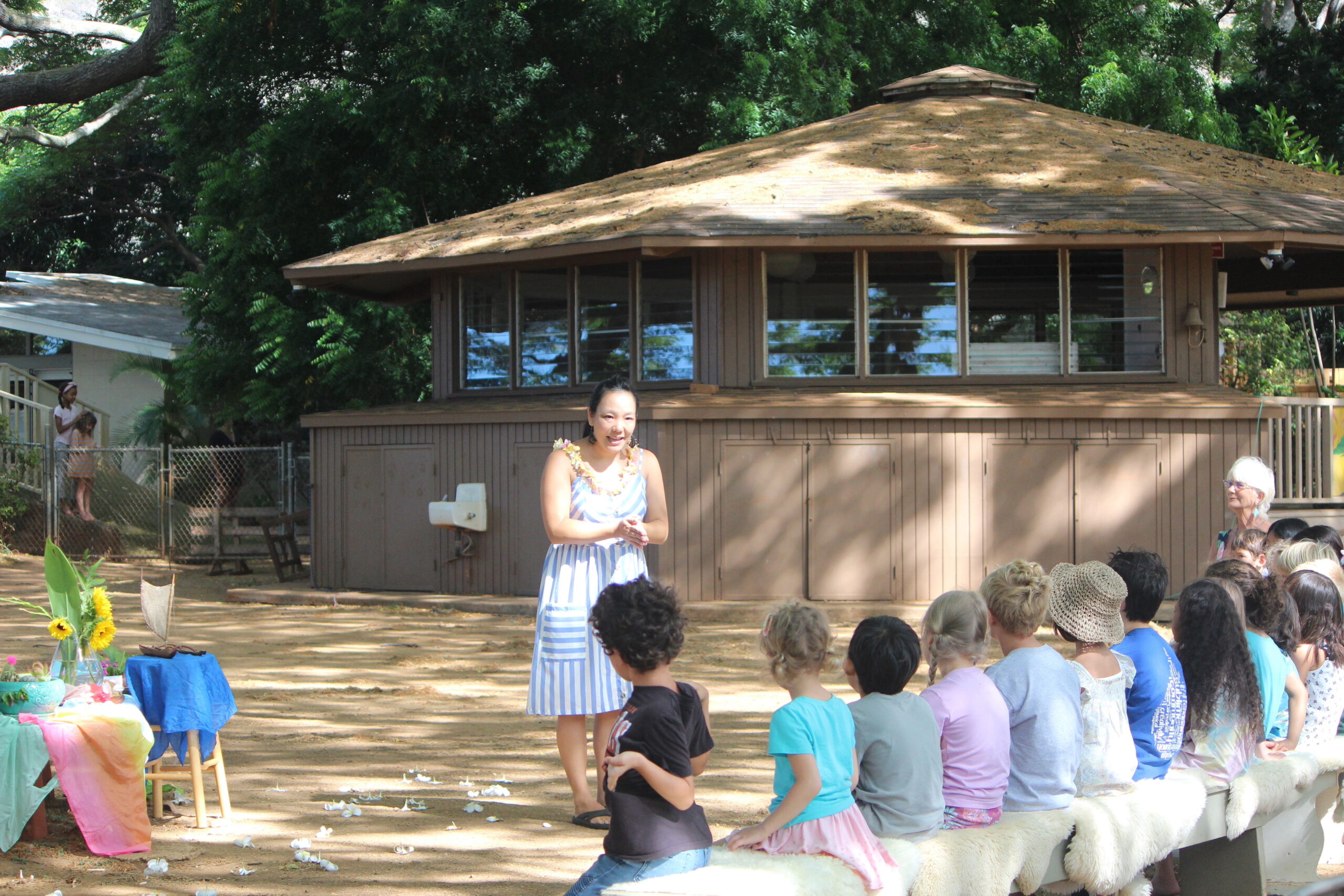
Grade One Orientation for Students and Families
(Day Before the First Day of School)
A new tradition has been initiated at the Honolulu Waldorf School. An intimate ceremony takes place the day before the official first day of school that formally introduces the Grade One children to their new class teacher. Teacher and children then go to their classroom for a tour and orientation to their new space. Parents and other teachers of the children share refreshments and social time until the children and teacher are ready to invite them into the classroom for a tour and farewell for the day.
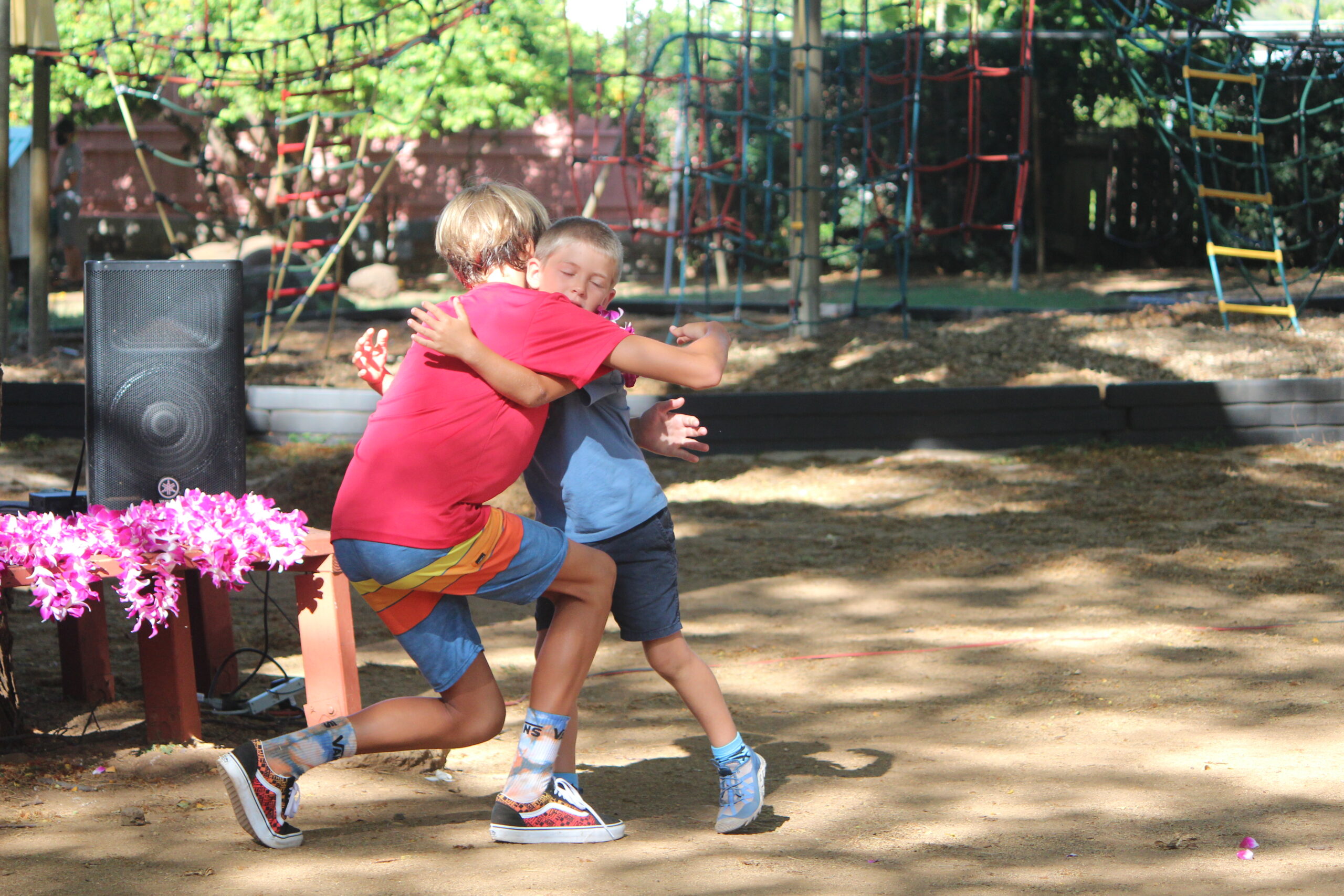
The Lei Ceremony
(First Day of School)
The Lei Ceremony marks the first day of school when we all gather together to begin the year. The Grade 1 children, bright-eyed and awed by this significant moment, are welcomed into the grade school with lei by the students of Grade 8. It is a wonderful and tender ‘reflection’ on the journey through the grades as the young children look ahead to where they will be in seven years while the older students look back on the path of their own education.

Michaelmas
(On or around September 29)
In Celtic tradition, St. Michael represents the unconquered hero fighting against the powers of darkness. It’s traditionally a harvest festival just after Autumn Equinox when the days grow shorter and the nights grow longer. The essence of this festival are seen in Michael’s flaming sword, a symbol of light and the power of truth. It calls on the awakening of our own inner light and to overcome the dragons, both in ourselves and the world around us. Celebrating Michaelmas, we strive to stimulate the children’s will to do good and hold to their path of truth; that doing even the smallest good deed strengthens the power of good in the world. Each year community projects and/or an all-school pageant honors Michaelmas on or near September 29.
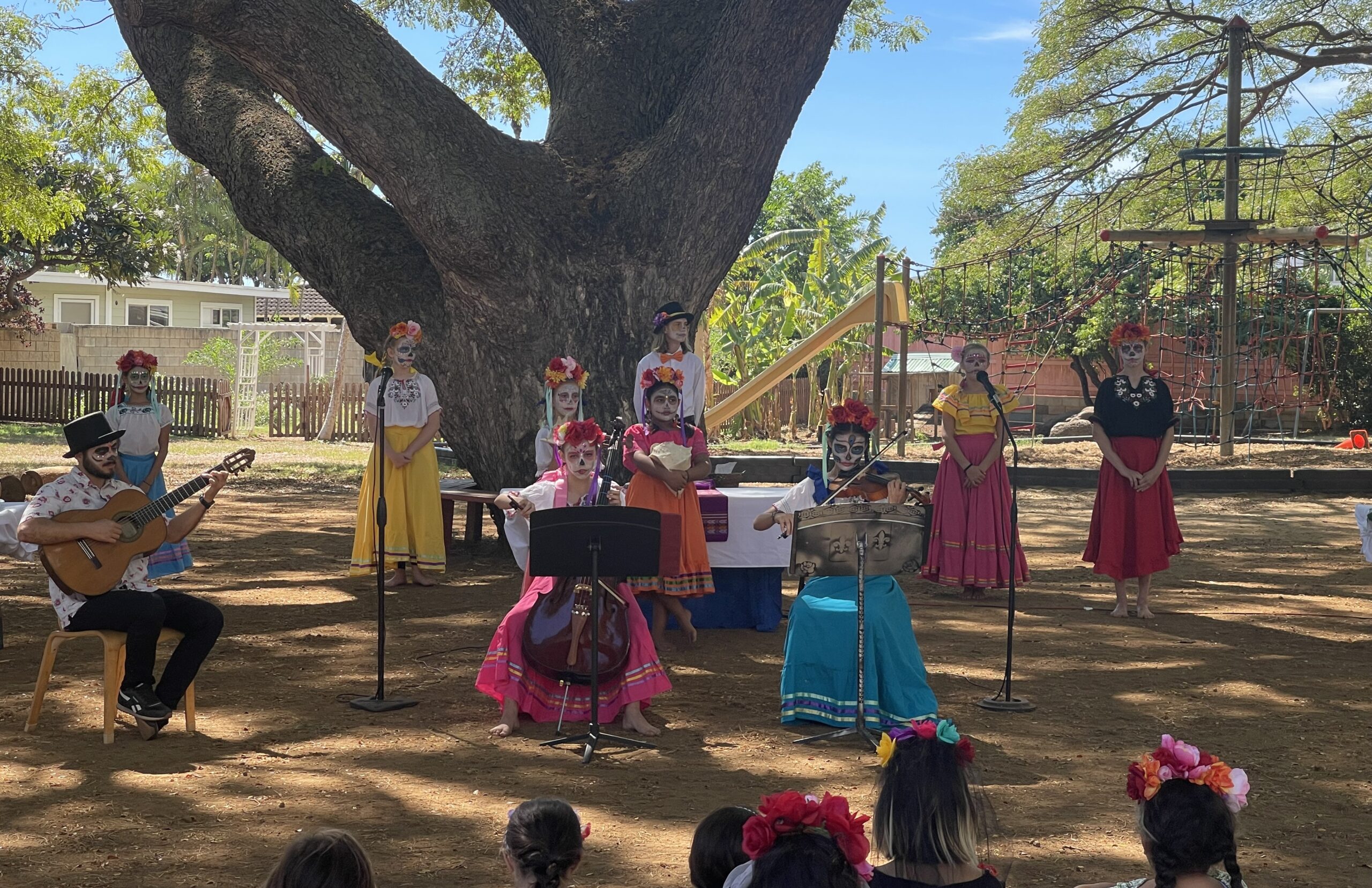
Day of the Dead
(on or around November 2)
Day of the Dead (Spanish: Día de los Muertos) is a holiday celebrated by many in Mexico and by some Mexican Americans living in the United States and Canada. The holiday focuses on family and friends coming together to honor and remember their ancestors and loved ones who have died. The celebration occurs on November 2 in connection with All Saints’ Day (November 1) and All Souls’ Day (November 2). It is a tradition to build private altars honoring the deceased using sugar skulls, marigolds, and the favorite foods and beverages of the departed and visiting graves with these as gifts. Due to occurring shortly after Halloween, the Day of the Dead is sometimes thought to be a similar holiday, although the two actually have little in common. The Day of the Dead is a time of celebrating the continuation of life and our connection to one another.

Penny Harvest
(November)
The Penny Harvest during Thanksgiving week celebrates our gratitude for all that we have, and seeks to share with those who are in need. The students prepare for this event by bringing their pennies, nickels, dimes and quarters to the classroom. Each class then brings their jars of change to the Penny Harvest assembly. The ‘harvest’ is counted and given to the Hawaii Food Bank, which then distributes food and other essentials throughout our local community.
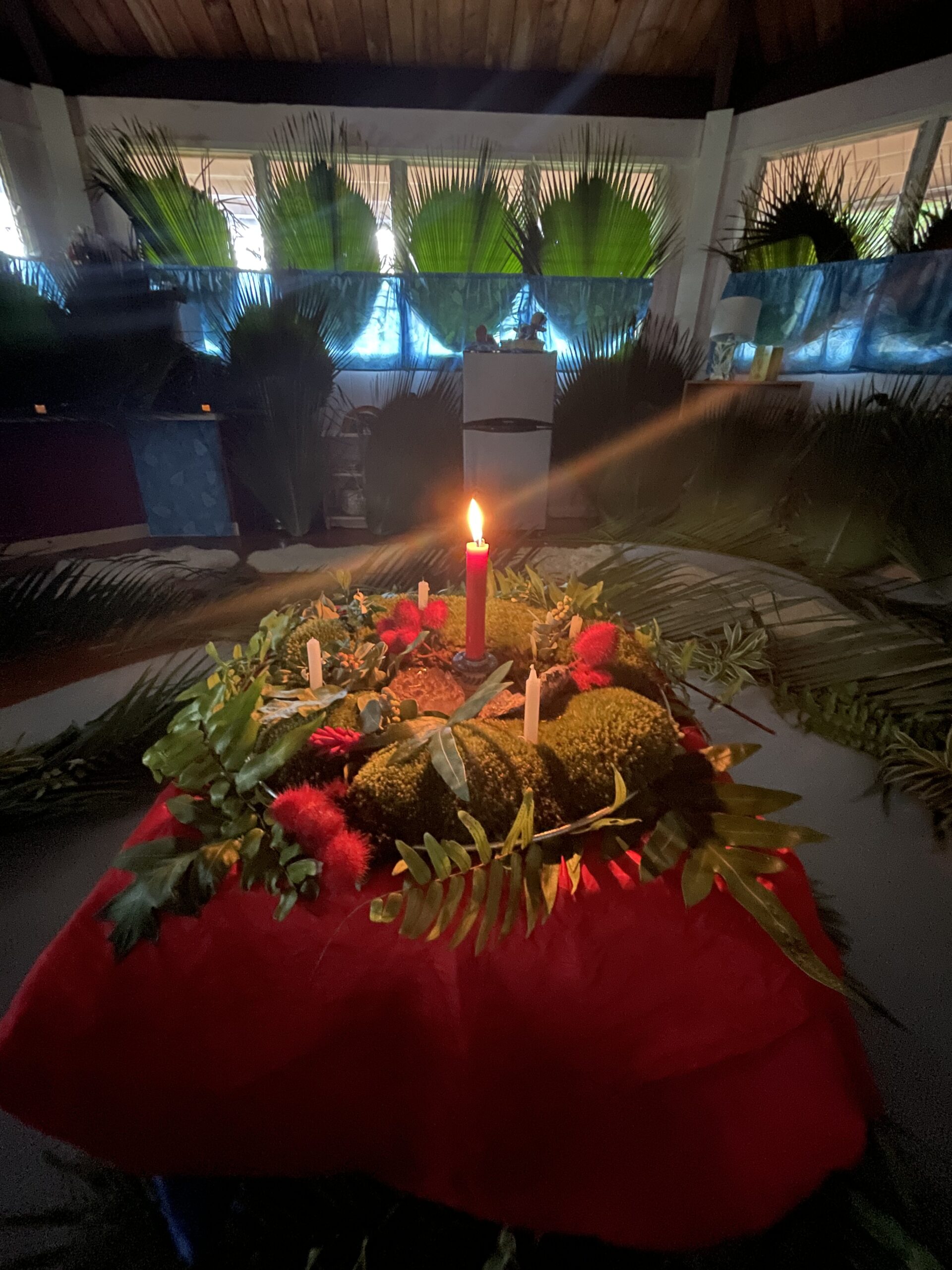
Spiral of Lights
(December)
This festival, shared by younger students up to Grade 2, is one of the most beautiful and memorable of the season. It marks the beginning of Advent, the fourth Sunday before Christmas. In a semi-darkened room, lit only by candles and smelling of evergreens, each child goes, one at a time, through the spiral built of evergreen branches to the center of the garden. Each child lights his or her candle, then places it somewhere on the pathway to light the way for the next child. It is a reminder of the journey each of us must make as we go into the darker
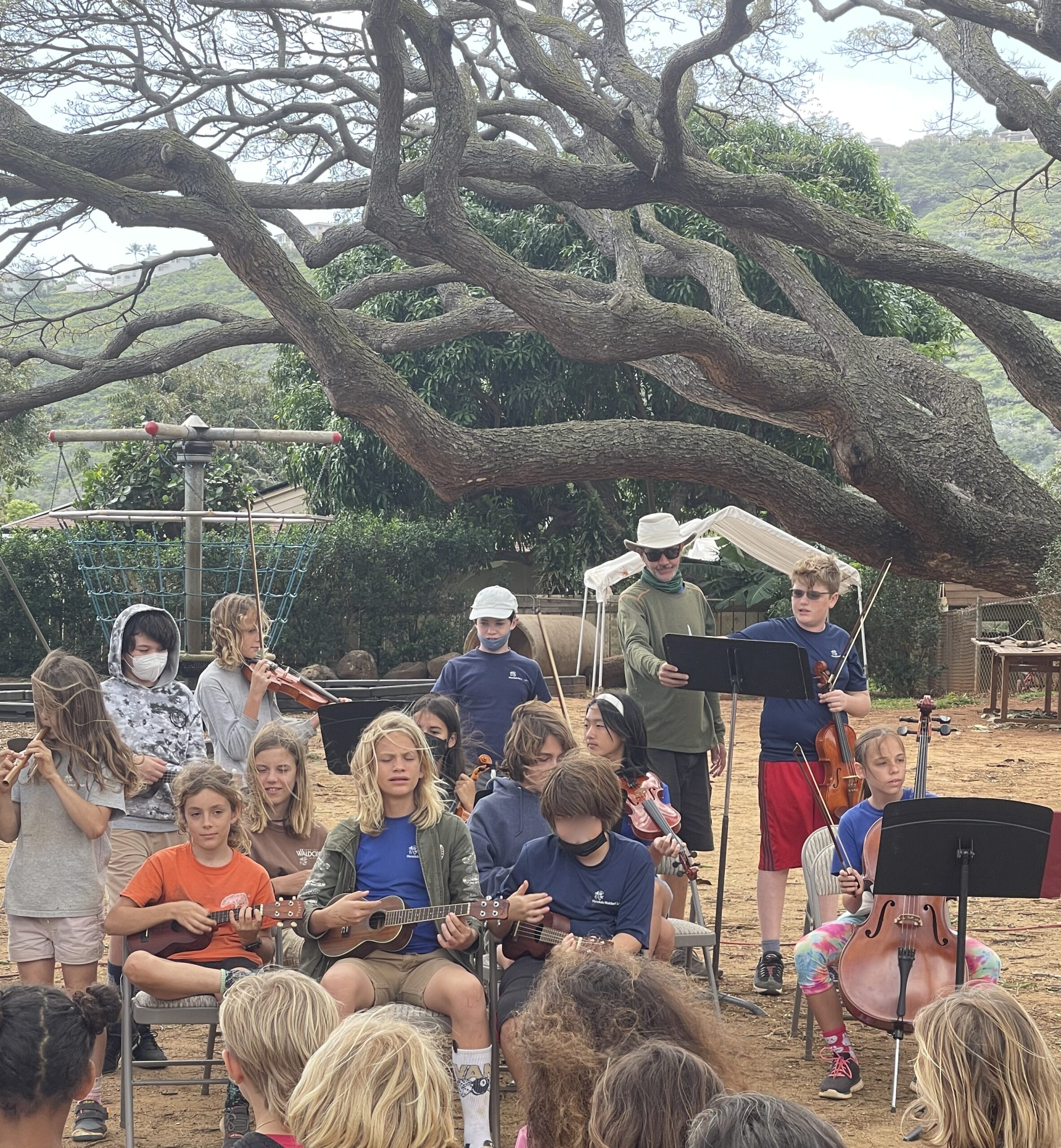
Winter Jubilee
(December)
This festival is a sharing of the class work in each grade and is celebrated by the children in Grades 3 – 12 during the month of December. Story, music, poetry, drama and dance are woven together in a different way each year. Everyone is invited as we honor the gift of light that shines in each of us and in our community through the days of winter darkness.
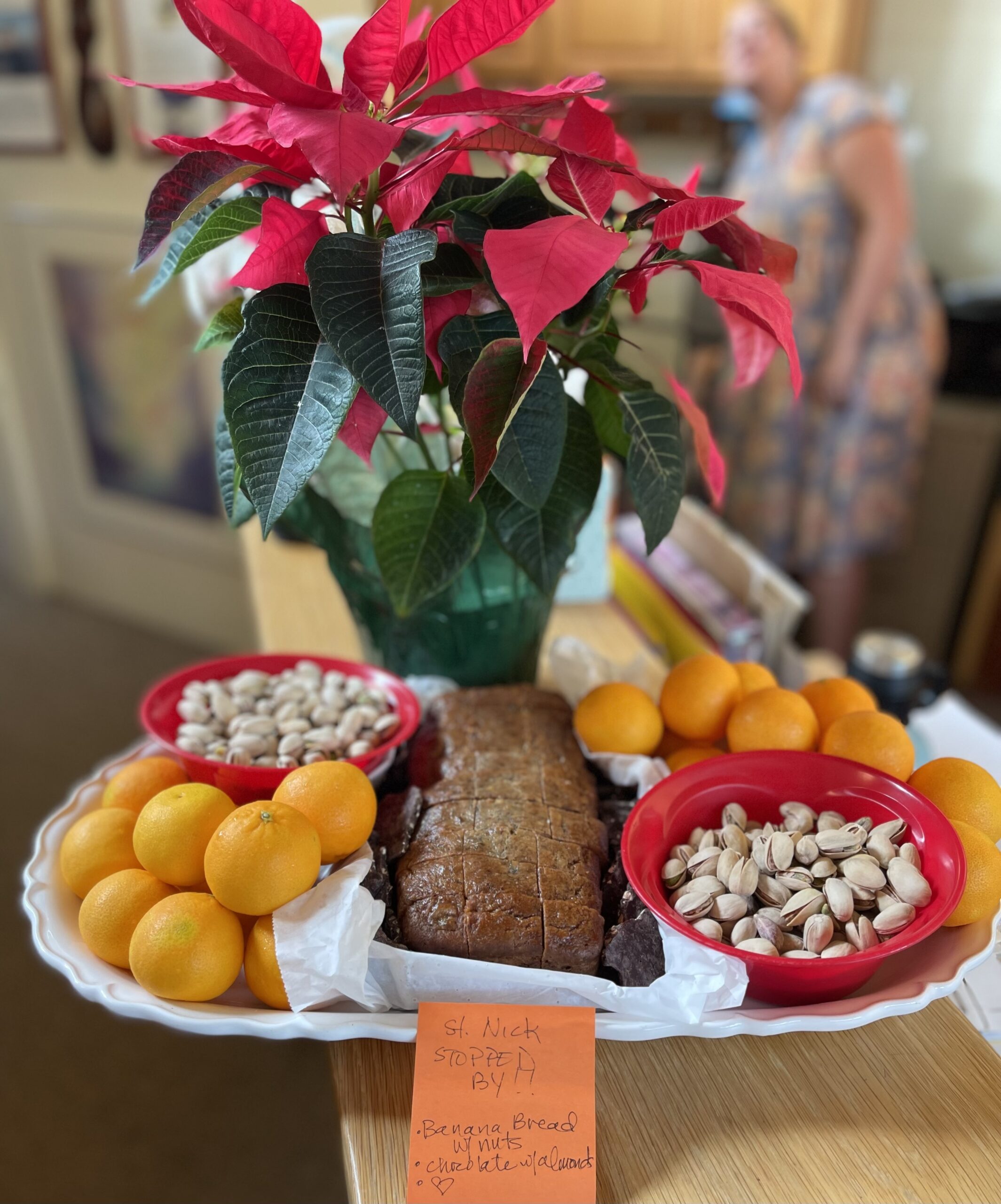
Saint Nicholas
(on or around December 6)
At this time of the year the children hear the story of St. Nicholas and all he did to help people by surprising those in need with gifts of food, money and treats. This helps to foster an atmosphere of preparation and giving for the children during Advent. It is traditional for children to leave their shoes out by the door the night before (Dec. 5) to receive a golden nut or small gift from St. Nicholas. St. Nicholas, with his mischievous friend Ruprecht, pays a visit to the grades’ classrooms, reading from his golden book and offering advice and encouragement to the children.
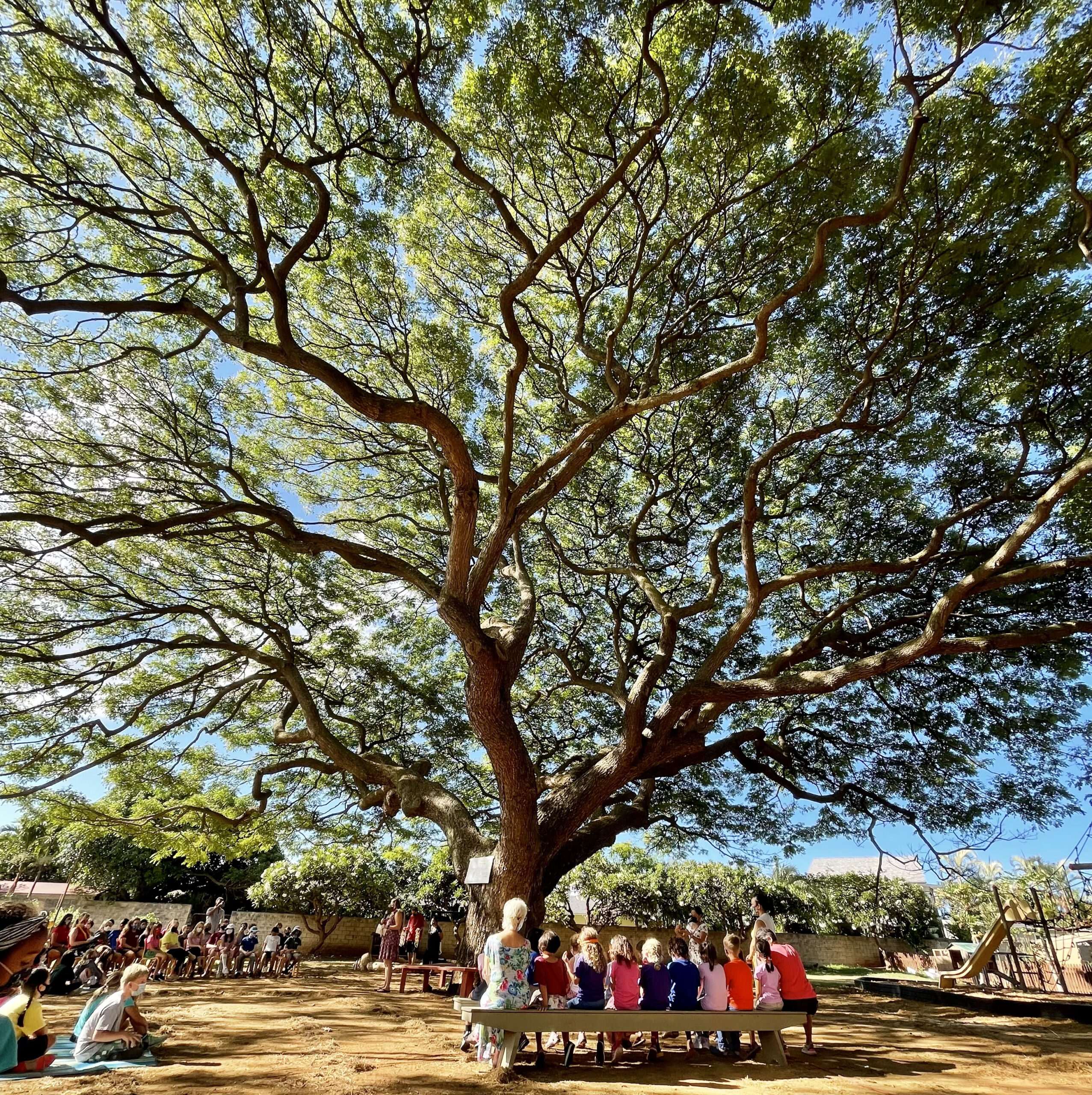
Kupuna Day
(March/April)
This is a special day in the spring for Grandparents (and special friends, such as neighbors, aunts, uncles) to visit HWS. They are invited to observe the classrooms of their grandchildren and to attend a special assembly where each class gives an artistic presentation. They learn more about the school while enjoying refreshments and meeting other Grandparents in our community.
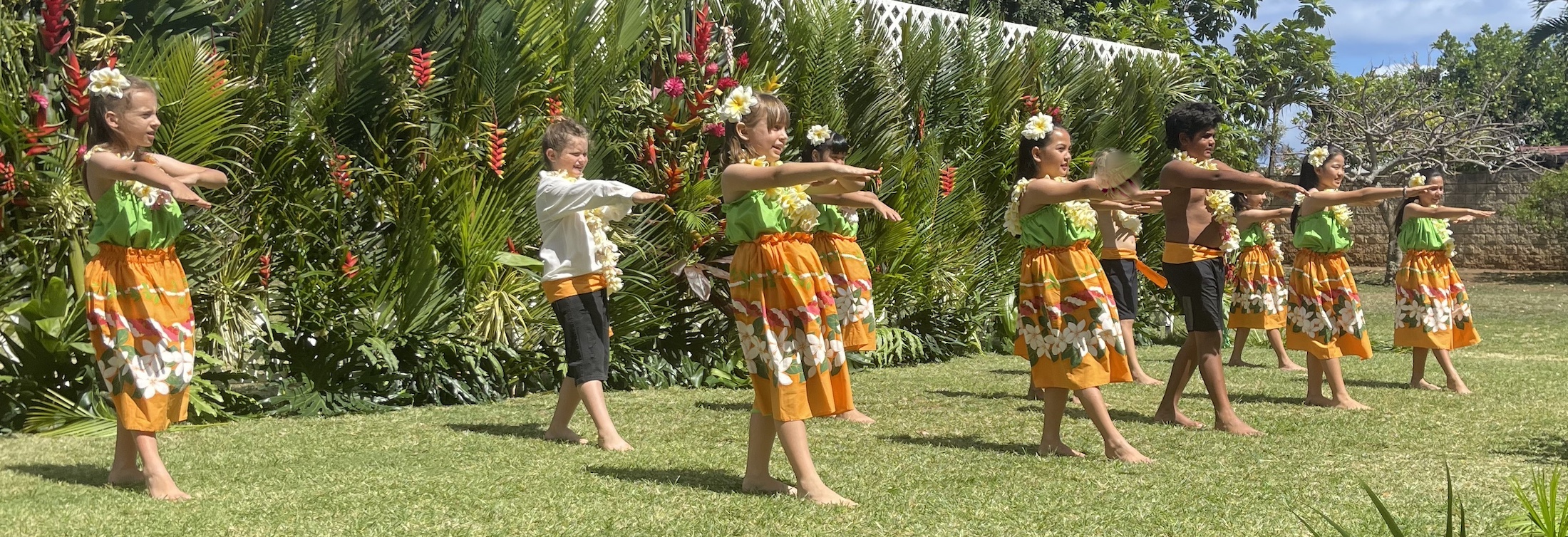
May Day
(On or around May 1)
May Day is the rich and colorful celebration of our Hawaiian culture and traditions. Each year the children of the 6th grade are chosen to re-enact the Ali’i of a Hawaiian royal court. In their presence, all the children, dressed in lei and costume, take part in the festivities by singing, chanting and dancing both ancient and modern hula. All are invited to this beautiful and uplifting celebration.
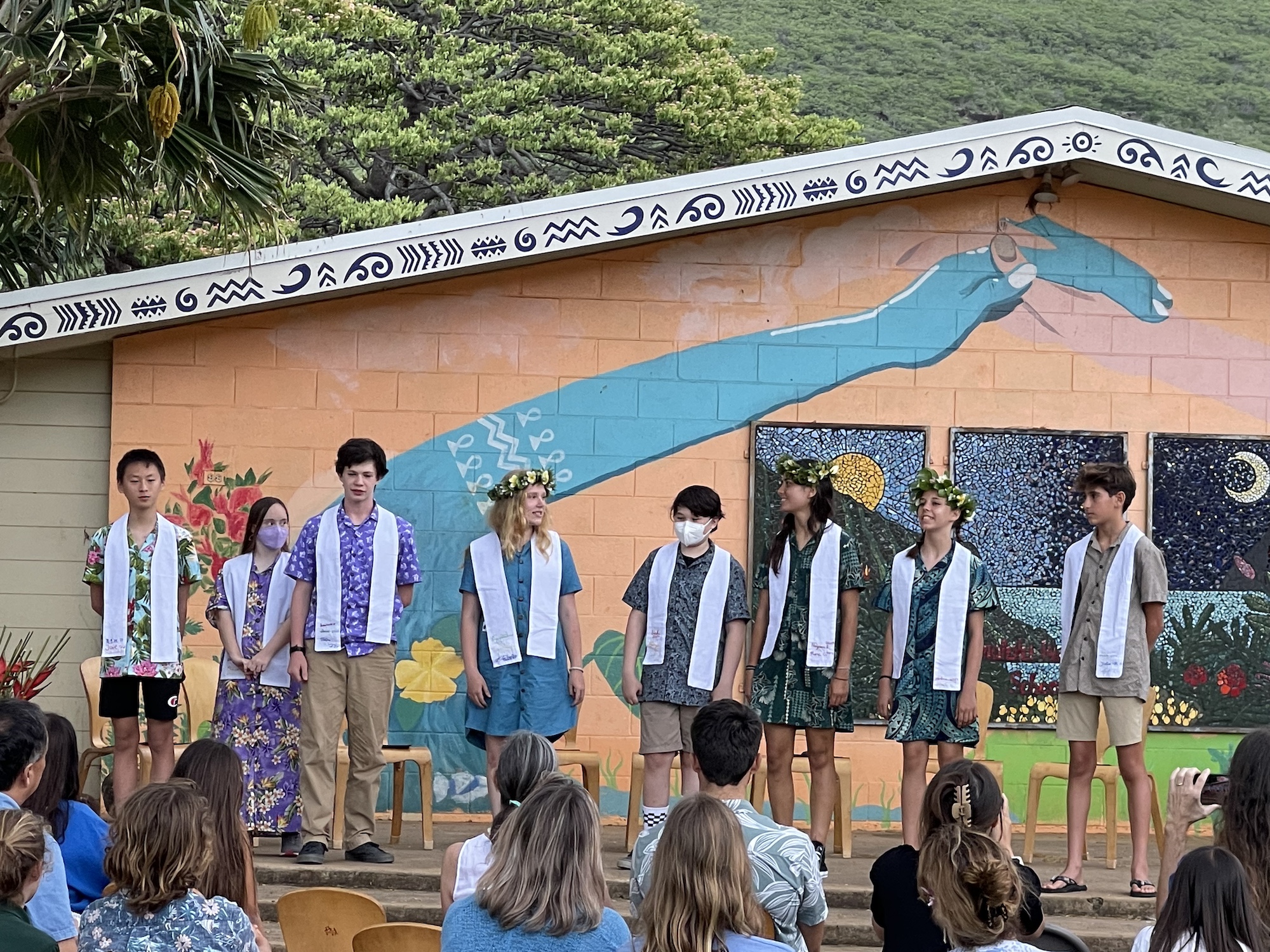
Grade Eight Graduation
(May)
This important event acknowledges our eighth graders’ promotion to high school and allows them a chance to thank their many teachers and to be appreciated by each of the lower school classes. It culminates with the eighth graders passing on their trash pick-up duty to the seventh graders in some creative manner. As space is limited, immediate family members of 8th graders are warmly invited to join the lower school students, faculty and administrative staff.
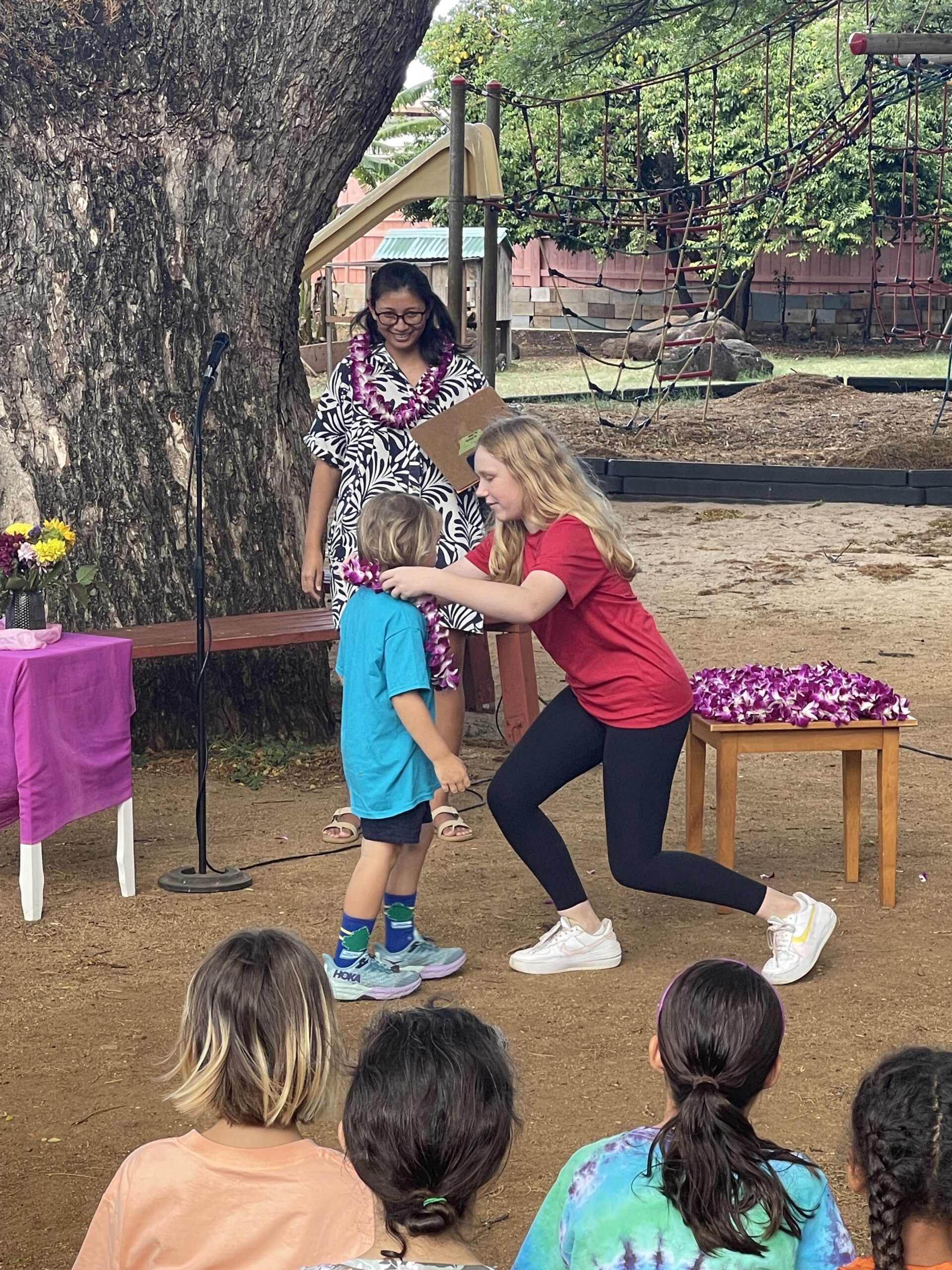
Closing Ceremony
(May – Last Day of School)
This assembly marks the end of the school year. All the grades gather to reflect upon what has been learned and experienced and to celebrate our accomplishments together. As an echo of the opening day, the first graders join the rest of the school in bidding farewell to the Grade 8 students by presenting a rose and lei to each graduate. All families are invited to attend. The last day of school is a half day.